Abstract
The water soluble, chemically reactive thioglycollic acid thioether derivatives of oxazolone and picryl chloride were synthesized and tested for their ability to prevent the development of contact sensitivity. Mice given two injections of these agents showed partial or complete unresponsiveness when subsequently sensitized and challenged with oxazolone and picryl chloride, respectively. This unresponsiveness was associated with T suppressor cells, Ts-eff(cs), which blocked the efferent stage of the contact sensitivity reaction, i.e. the passive transfer of contact sensitivity. These Ts-eff(cs) were entirely specific when tested with the corresponding antigen. However, the suppression which they caused had a non-specific final common pathway. Cell from mice injected with the oxazolone and picryl thioethers and painted with the corresponding contact sensitizer produced a suppressor factor in vitro. This factor specifically blocked passive transfer by immune cells incubated in it. It also armed macrophages which then caused suppression. These macrophages were most effective when injected intraperitoneally. The suppressor factor had a molecular weight between 30,000 and 100,000 and the alpha-oxazolone factor was absorbed by oxazolone-albumin Sepharose and could be eluted with oxazolone-epsilon-aminocaproic acid. It was also absorbed by concanavalin-A-sepharose and could be eluted with alpha-methylmannoside. It is proposed that the ability of water soluble, chemically reactive haptenes to evoke a Ts-eff(cs) population may be relevent to the rarity of severe drug reactions following the injection of chemically reactive drugs.
Full text
PDF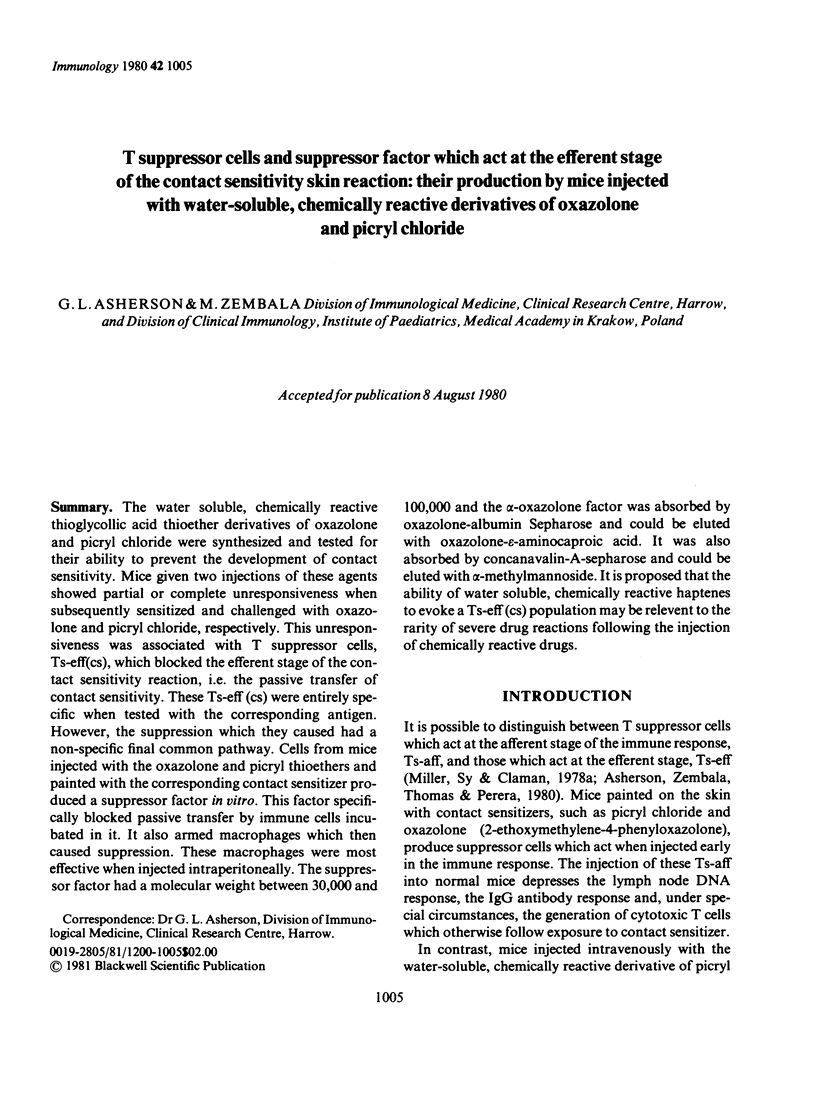
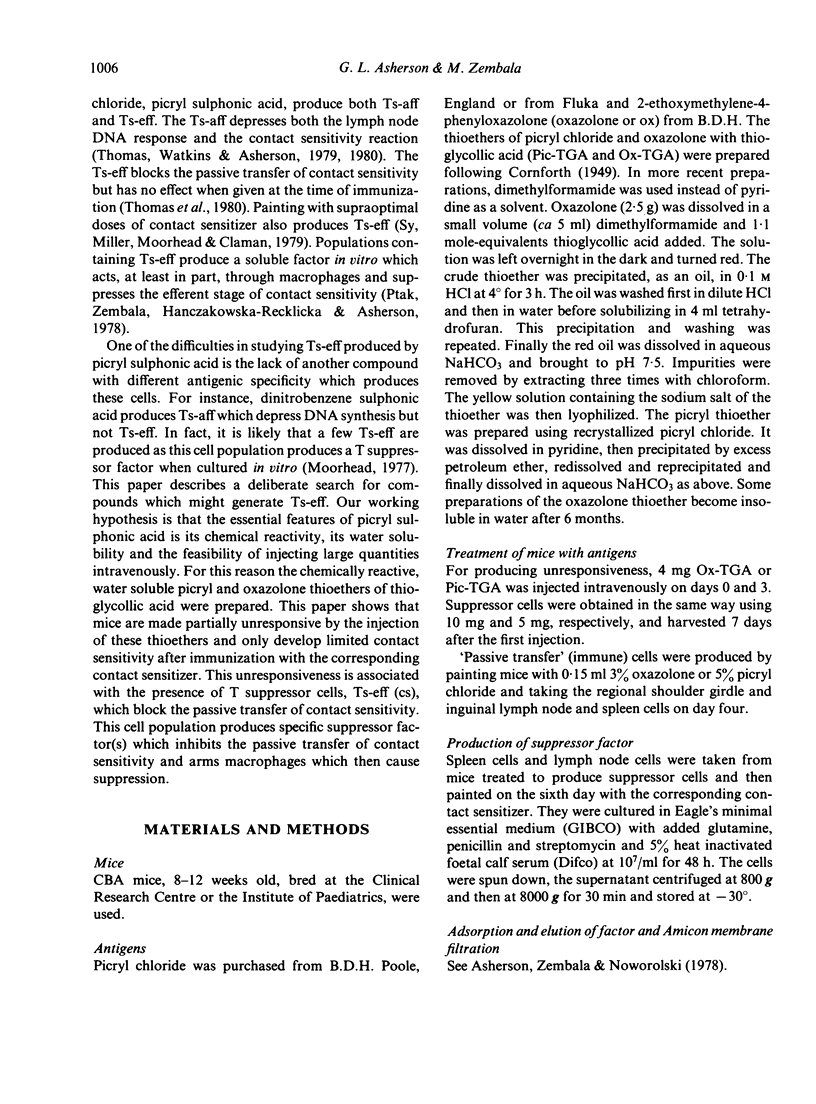
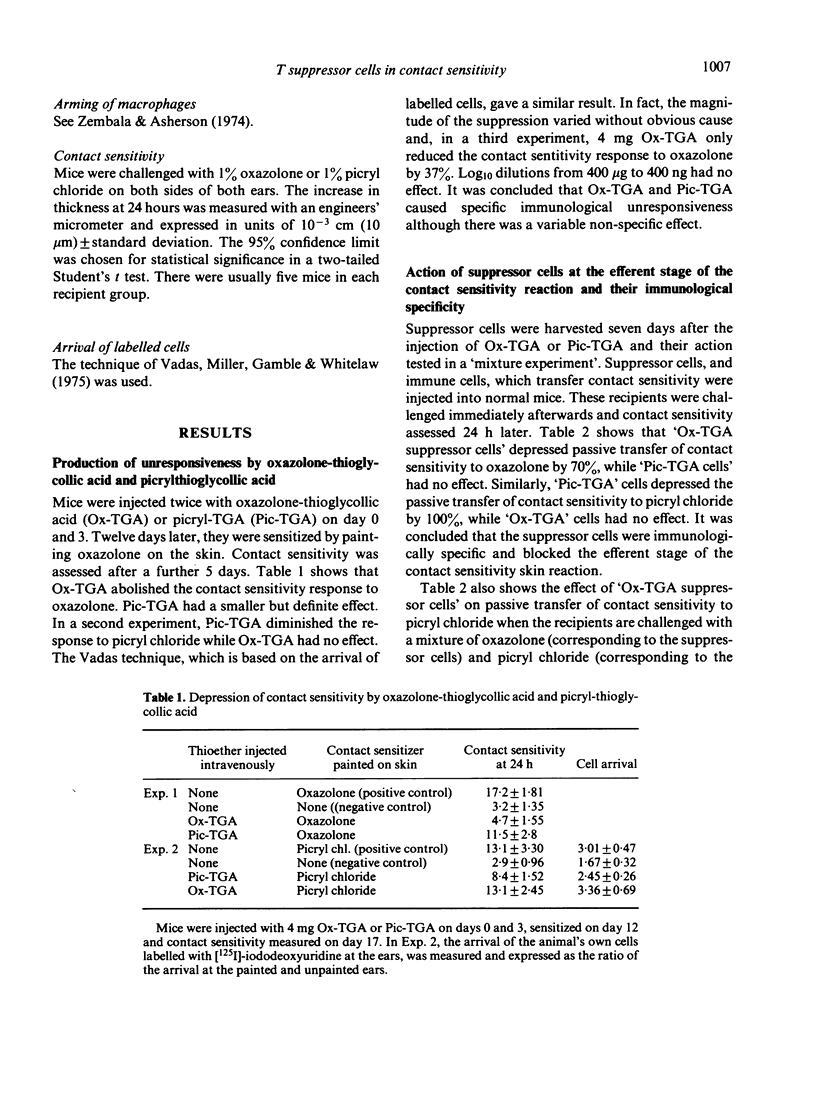
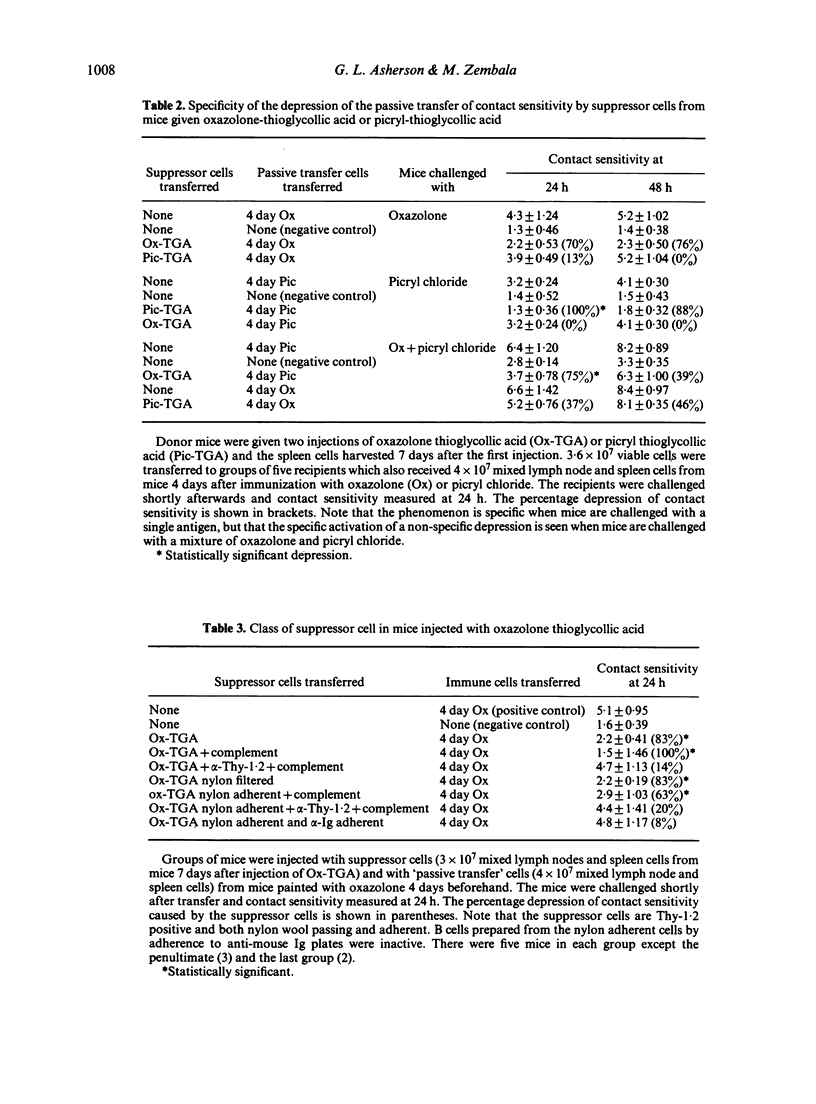
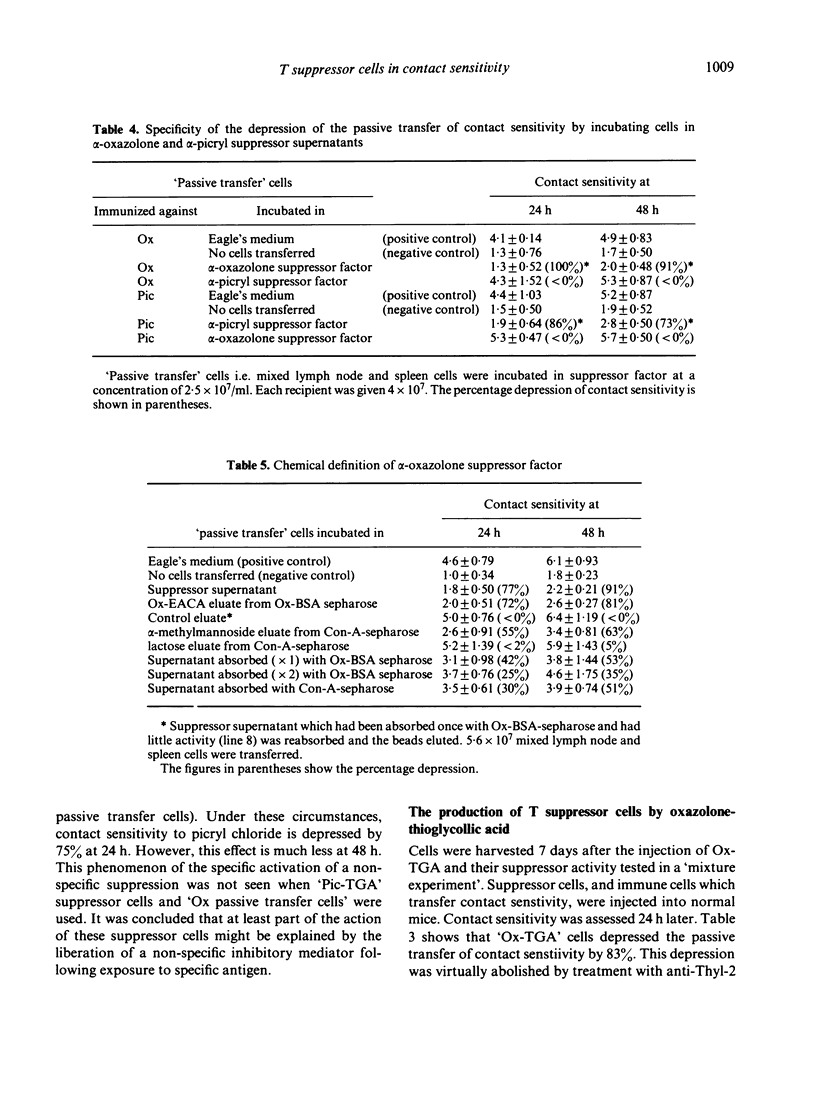
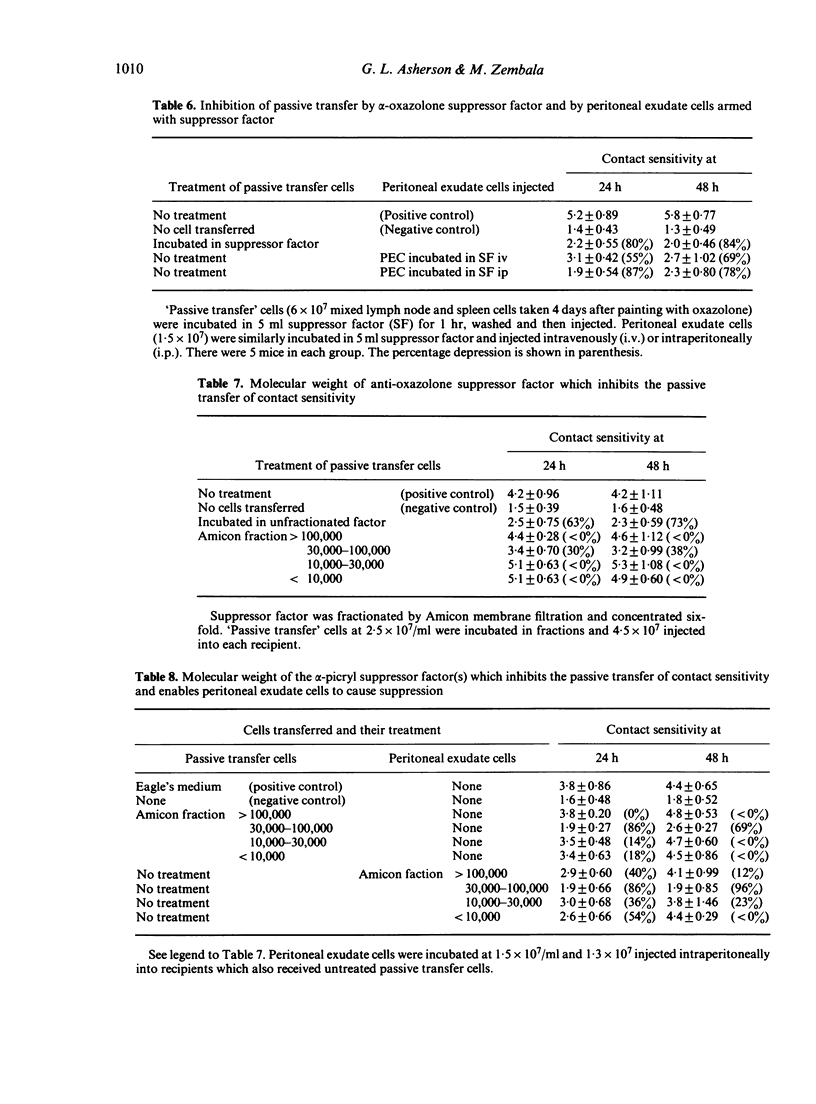

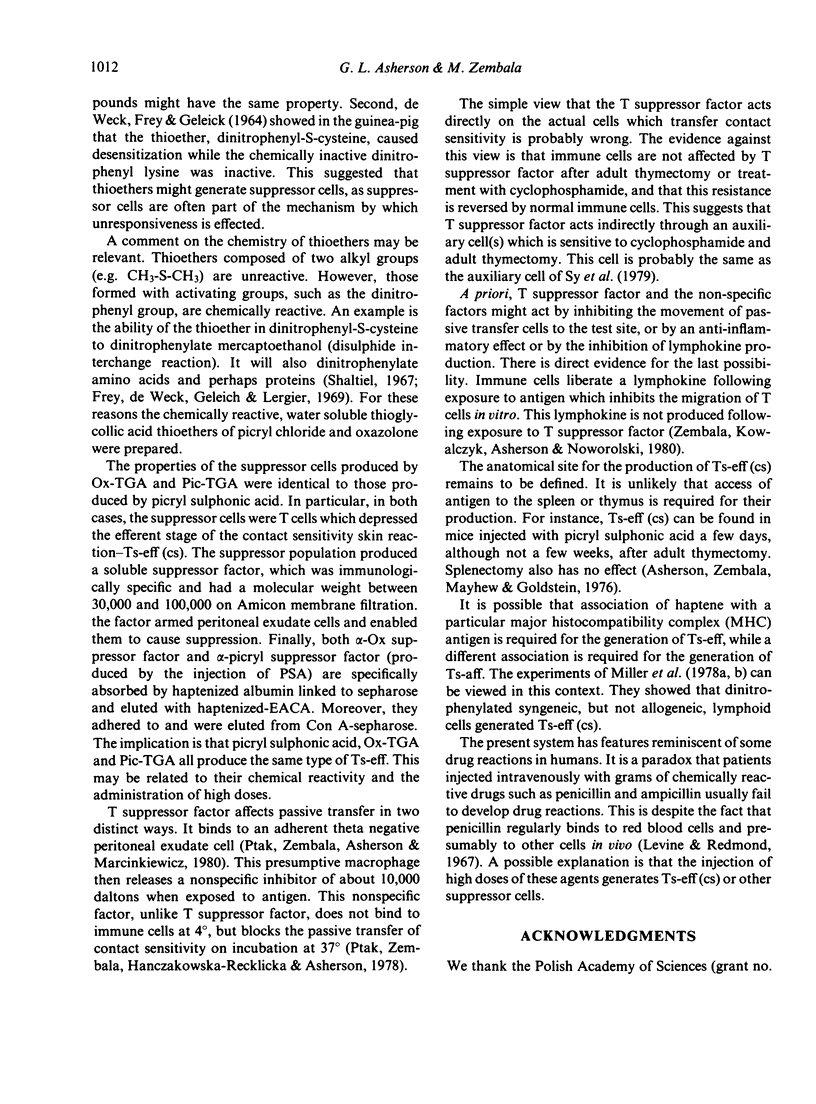
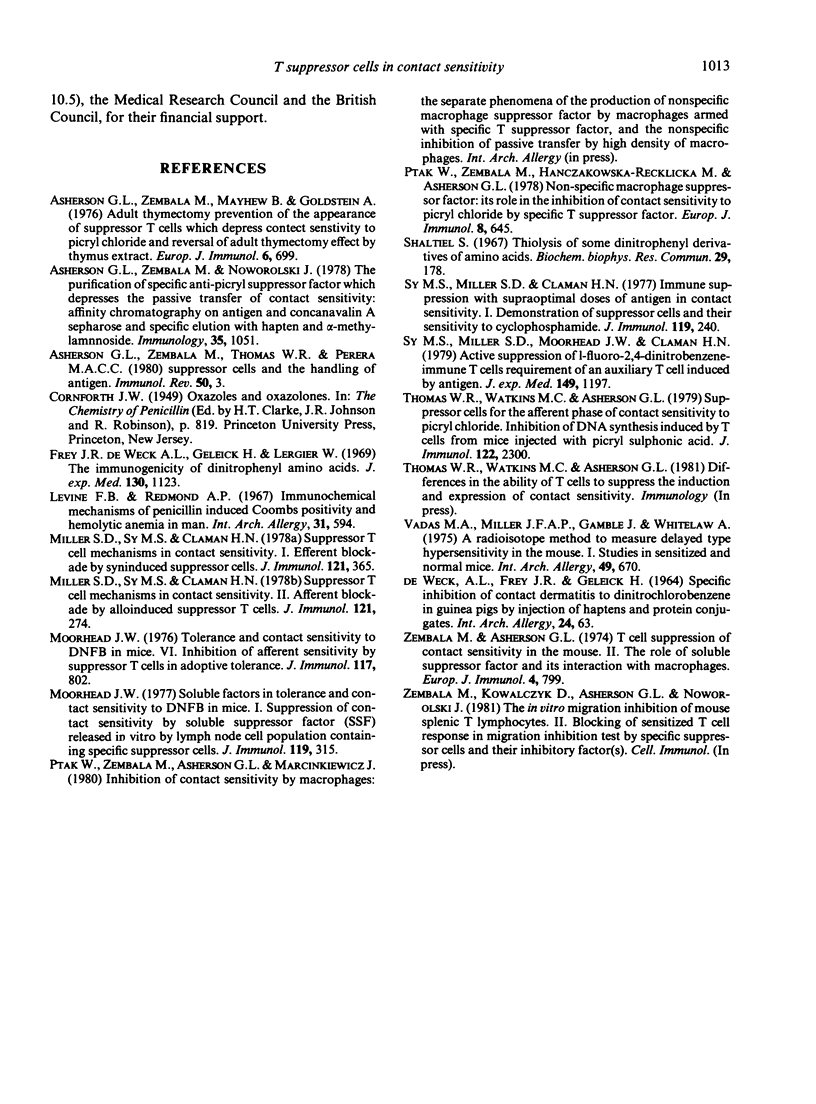
Selected References
These references are in PubMed. This may not be the complete list of references from this article.
- Asherson G. L., Zembala M., Mayhew B., Goldstein A. Adult thymectomy prevention of the appearance of suppressor T cells which depress contact sensitivity to picryl chloride and reversal of adult thymectomy effect by thymus extract. Eur J Immunol. 1976 Oct;6(10):699–703. doi: 10.1002/eji.1830061008. [DOI] [PubMed] [Google Scholar]
- Asherson G. L., Zembala M., Noworolski J. The purification of specific anti-picryl T suppressor factor which depresses the passive transfer of contact sensitivity: affinity chromatography on antigen and Concanavalin A sepharose and specific elution with hapten and alpha-methylmannoside. Immunology. 1978 Dec;35(6):1051–1056. [PMC free article] [PubMed] [Google Scholar]
- Frey J. R., de Weck A. L., Geleick H., Lergier W. The immunogenicity of dinitrophenyl amino acids. J Exp Med. 1969 Nov 1;130(5):1123–1143. doi: 10.1084/jem.130.5.1123. [DOI] [PMC free article] [PubMed] [Google Scholar]
- Levine B., Redmond A. Immunochemical mechanisms of penicillin induced Coombs positivity and hemolytic anemia in man. Int Arch Allergy Appl Immunol. 1967;31(6):594–606. doi: 10.1159/000229906. [DOI] [PubMed] [Google Scholar]
- Miller S. D., Sy M. S., Claman H. N. Suppressor T cell mechanisms in contact sensitivity. II. Afferent blockade by alloinduced suppressor T cells. J Immunol. 1978 Jul;121(1):274–280. [PubMed] [Google Scholar]
- Moorhead J. W. Soluble factors in tolerance and contact sensitivity to 2,4-dinitrofluorobenzene in mice. I. Suppression of contact sensitivity by soluble suppressor factor released in vitro by lymph node cell populations containing specific suppressor cells. J Immunol. 1977 Jul;119(1):315–321. [PubMed] [Google Scholar]
- Moorhead J. W. Tolerance and contact sensitivity to DNFB in mice. VI. Inhibition of afferent sensitivity by suppressor T cells in adoptive tolerance. J Immunol. 1976 Sep;117(3):802–806. [PubMed] [Google Scholar]
- Ptak W., Zembala M., Hanczakowski-Rewicka M., Asherson G. L. Nonspecific macrophage suppressor factor: its role in the inhibition of contact sensitivity to picryl chloride by specific T suppressor factor. Eur J Immunol. 1978 Sep;8(9):645–649. doi: 10.1002/eji.1830080908. [DOI] [PubMed] [Google Scholar]
- Shaltiel S. Thiolysis of some dinitrophenyl derivatives of amino acids. Biochem Biophys Res Commun. 1967 Oct 26;29(2):178–183. doi: 10.1016/0006-291x(67)90583-9. [DOI] [PubMed] [Google Scholar]
- Sy M. S., Miller S. D., Claman H. N. Immune suppression with supraoptimal doses of antigen in contact sensitivity. I. Demonstration of suppressor cells and their sensitivity to cyclophosphamide. J Immunol. 1977 Jul;119(1):240–244. [PubMed] [Google Scholar]
- Sy M. S., Miller S. D., Moorhead J. W., Claman H. N. Active suppression of 1-fluoro-2,4-dinitrobenzene-immune T cells. Requirement of an auxiliary T cell induced by antigen. J Exp Med. 1979 May 1;149(5):1197–1207. doi: 10.1084/jem.149.5.1197. [DOI] [PMC free article] [PubMed] [Google Scholar]
- Thomas W. R., Watkins M. C., Asherson G. L. Suppressor cells for the afferent phase of contact sensitivity to picryl chloride: inhibition of DNA synthesis induced by T cells from mice injected with picryl sulfonic acid. J Immunol. 1979 Jun;122(6):2300–2303. [PubMed] [Google Scholar]
- Vadas M. A., Miller J. F., Gamble J., Whitelaw A. A radioisotopic method to measure delayed type hypersensitivity in the mouse. I. Studies in sensitized and normal mice. Int Arch Allergy Appl Immunol. 1975;49(5):670–692. doi: 10.1159/000231449. [DOI] [PubMed] [Google Scholar]


